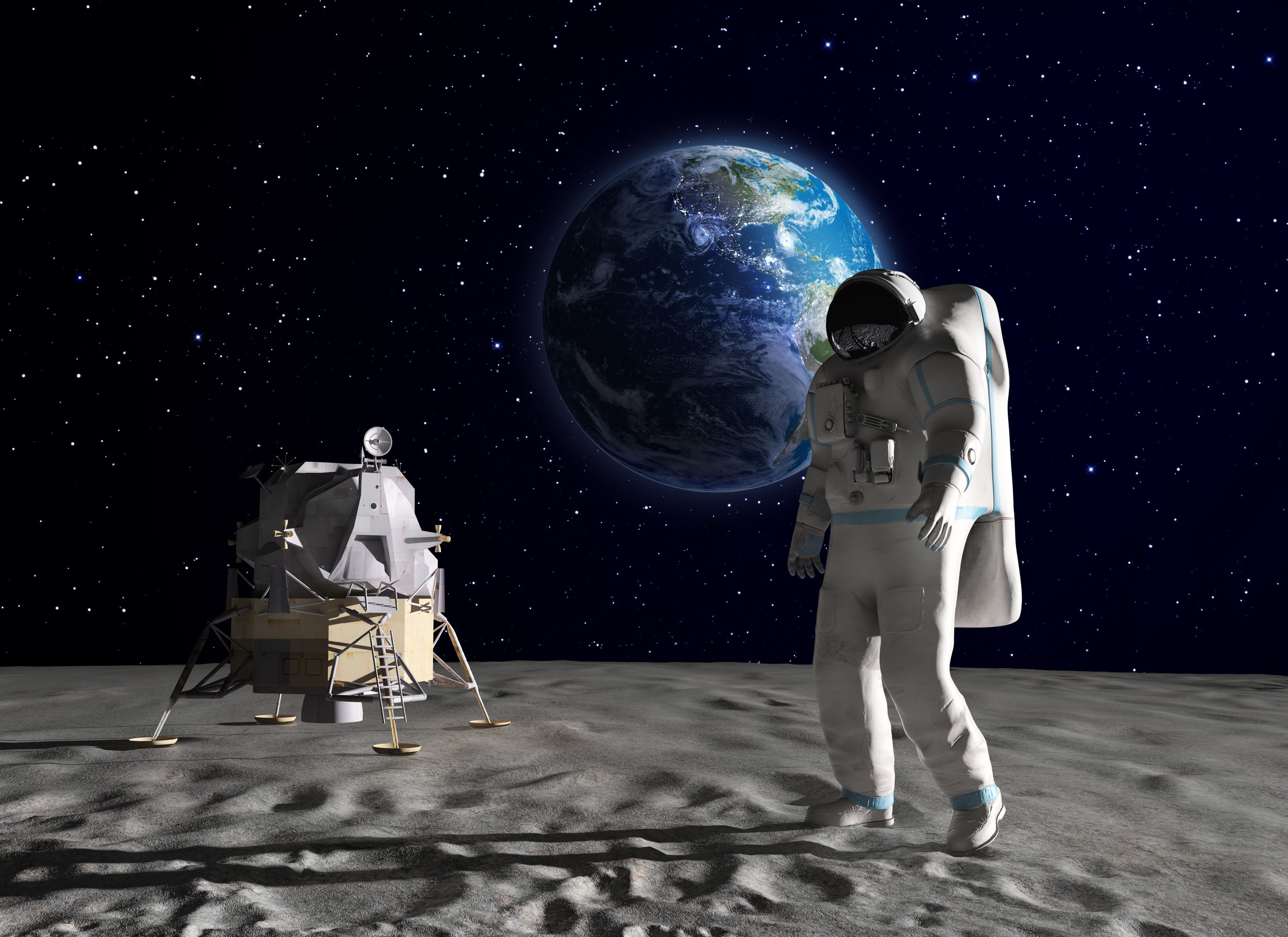‘First Man’: When a Father Walked on the Moon
Neil Armstrong was the first civilian astronaut and the first man to walk on the moon. The biopic movie also shows that first, he was a husband and a father.
My husband Jim and I settled in to watch “First Man,” the story of Neil Armstrong’s rise to the moon, on the night the film won an Oscar for Best Visual Effects. Yes, the visual effects were spectacular. But for me, the daughter of an Air Force test pilot, the emotional effects struck a deeper chord. Like my own dad, Neil Armstrong was, first and foremost, a husband and a father.
Juxtaposed with the stomach-turning scenes of Armstrong’s disastrous X-15 landing in the Mojave Desert are scenes of him holding his two-year-old daughter, Karen, as she vomits into a toilet. The child is sick after undergoing radiation therapy for a brain tumor. Portrayed by actor Ryan Gosling, Armstrong is a tender, caregiving father. His pilot logs and notebooks are filled with decision tables and chronicles of doctor visits. It is clear he is seeking a miracle for his daughter as only a Purdue-educated engineer can: by following a logical path. Along with his wife Janet, portrayed by Claire Foy, Armstrong sees that there is no logic to the tragedy of childhood cancer; there is no equation to express the deep pain of watching a child suffer and die.
The story of the first man to walk on the moon could easily have been a space hero’s tale, the saga of a man with all the Right Stuff who planted the American flag on the moon’s surface. Instead, the screenplay by Josh Singer, based on the authorized biography by James Hansen, portrays Armstrong’s humanity as a husband, father, and friend. It shows the horrific fire that burned his astronaut friends Ed White, Gus Grissom, and Roger Chaffee to death on the launchpad of Apollo 1. We understand Janet Armstrong’s anger when her husband is assigned to command Apollo 11, fearing that their two young sons will lose their father as a sacrifice to the almighty NASA Space Race.
As Baby Boomer Air Force Brat, I often witnessed the same conflict at home when my own father, a test pilot who was friends with Ed White and Gus Grissom, got an assignment that pissed off my mom because it risked Dad’s life. In my family, we expected war deployments, TDYs, top secret missions where my mom didn’t know where Dad was or when he would be back. This is the reality of life in the military.
Although Neil Armstrong was an “egghead” civilian, his family was drawn into the military-industrial world of NASA and the Houston neighborhood where the astronauts’ families all lived. After Ed White dies, the film shows Janet Armstrong walking across the street to hug his wife Pat, who is already packing up the house and the children. Pat dutifully says good-bye, understanding that the luxurious homes provided by NASA are reserved for families of living astronauts, not dead ones.
The telling scene comes at the end of the film, when Armstrong is about to step down onto the moon. He hesitates, not knowing if the surface will hold his weight or what lies ahead. He is no conquering hero, claiming the moon for United States by planting the Stars and Stripes. He is a man, awed by his surroundings. We see him switch into father mode, retrieving Karen’s baby bracelet from his spacesuit. He stands on the lip of the moon’s Little West Crater, his eyes full of tears. After a beat, he throws the bracelet into the abyss and watches it fly on and on, without gravity to hold it down.
There are lots of stories of women who, despite being wives and mothers, succeed in great feats. “First Man” may be the first story of a man who, despite being a husband and father, took one small step and made a giant leap for mankind.

